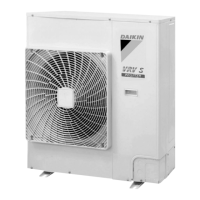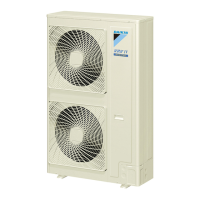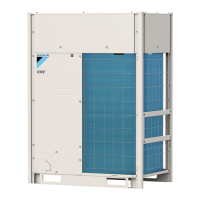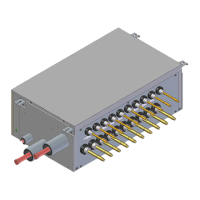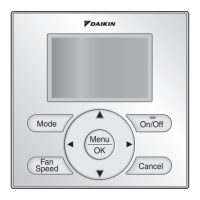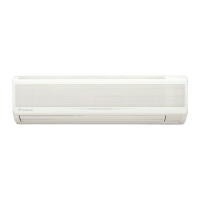3 | Specific installer safety instructions
Installer and user reference guide
26
RXYSA4~6A7V/Y1B
VRV 5-S system air conditioner
4P600330-1 – 2020.01
4 Determine the total amount of refrigerant in the system:
Contains fluorinated greenhouse gases
2
1
1
1
2
2
kg
tCO
2
eq
1000
GWP × kg
=
=
+
kg
=
kg
=
GWP: xxx
R32
Total charge=Factory charge +additional charge =3.4kg+R
(a)
(a)
The R value is calculated in "19.4To determine the additional refrigerant amount"[496].
5 The total refrigerant charge in the system MUST be less than the total
refrigerant charge limit value that is derived from the graph. If NOT, change
the installation (see choices below) and repeat all of the above steps.
1. Increase the area of smallest room.
OR
2. Decrease the piping length by changing the system layout.
OR
3. Add additional countermeasures as described in applicable legislation.
SVS output or optional output PCB for indoor unit can be used to
connect and activate the additional countermeasures (e.g. mechanical
ventilation). For more information, see "20.3To connect the external
outputs"[4110].
NOTICE
The total refrigerant charge amount in the system MUST always be lower than the
number of connected indoor units x15.96 [kg], with a maximum of 63.84kg.
E.g. In a system with 1 indoor unit, the maximum refrigerant charge amount is:
1x15.96=15.96kg.
Example1:
VRV system serving 6 rooms. The biggest room has an area of 60m², the smallest
room has an area of 16m². No underground floor in the building.
Use graph (c) to check the maximum allowed charge for a room of 16 m² with a
ceiling mounted unit: 10.4kg
Maximum field piping charge=charge in system–factory charge=10.4 kg–
3.4kg=7kg
0
1
2
3
4
5
6
7
8
10.4
9.4
12
13
14
15
16
10 20 40 50
16 28
25 35 45
m (kg)
A
min
(m
2
)
(b)
(d)
(a)
(c)
Example2:

